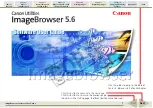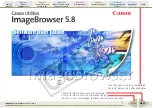
Using panels and the Property inspector
37
About the Property inspector
The Property inspector simplifies document creation by making it easy to access the most
commonly used attributes of the current selection, either on the Stage or in the Timeline. You can
make changes to the object or document attributes in the Property inspector without accessing
the menus or panels that contain these features.
Depending on what is currently selected, the Property inspector displays information and settings
for the current document, text, symbol, shape, bitmap, video, group, frame, or tool. When two or
more different types of objects are selected, the Property inspector displays the total number of
objects selected.
About the Library panel
The Library panel is where you store and organize symbols created in Flash, as well as imported
files, including bitmap graphics, sound files, and video clips. The Library panel lets you organize
library items in folders, see how often an item is used in a document, and sort items by type. See
“Using the library to manage media assets” in
Using Flash
.
About the Actions panel
The Actions panel lets you create and edit actions for an object or frame. Selecting a frame,
button, or movie clip instance makes the Actions panel active. The Actions panel title changes to
Button Actions, Movie Clip Actions, or Frame Actions, depending on what is selected.
For information on using the Actions panel, including switching between editing modes, see
“Using the Actions panel and Script window” in
Using ActionScript in Flash
.
Using panels
Panels in Flash help you view, organize, and change elements in a document. The options
available in panels control the characteristics of symbols, instances, colors, type, frames, and other
elements. You can use panels to customize the Flash interface, by displaying the panels you need
for a specific task and hiding other panels.
Panels let you work with objects, colors, text, instances, frames, scenes, and entire documents. For
example, you use the Color Mixer to create colors, and the Align panel to align objects to each
other or the Stage. To view the complete list of panels available in Flash, see the Window menu.
Most panels include a pop-up menu with additional options. The options menu is indicated by a
control in the panel’s title bar. (If no options menu control appears, there is no options menu for
that panel.)
By default, panels appear grouped at the bottom of the Flash work area and on the right of the
work area.
To open a panel:
•
Select the desired panel from the Window menu.
Summary of Contents for DIRECTOR MX 2004-GETTING STARTED WITH DIRECTOR
Page 1: ...Getting Started with Flash...
Page 14: ...14 Chapter 1 Getting Started...
Page 68: ...68 Index...
















































